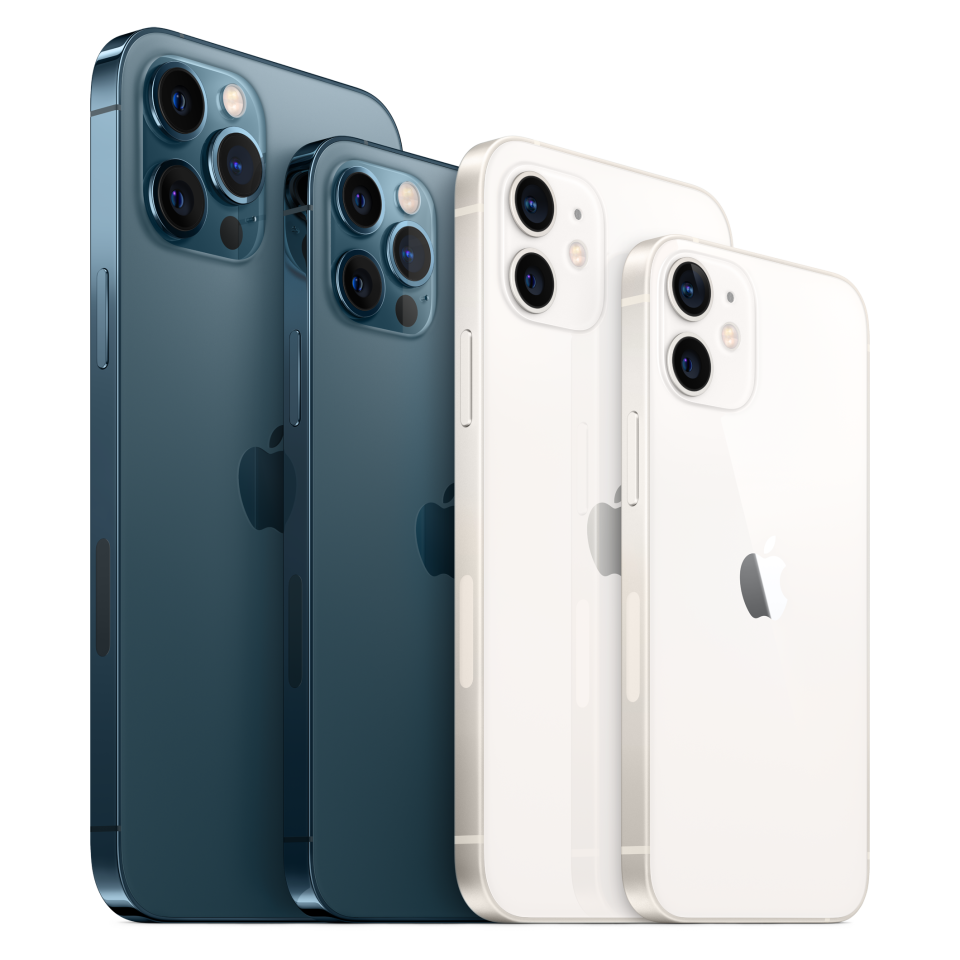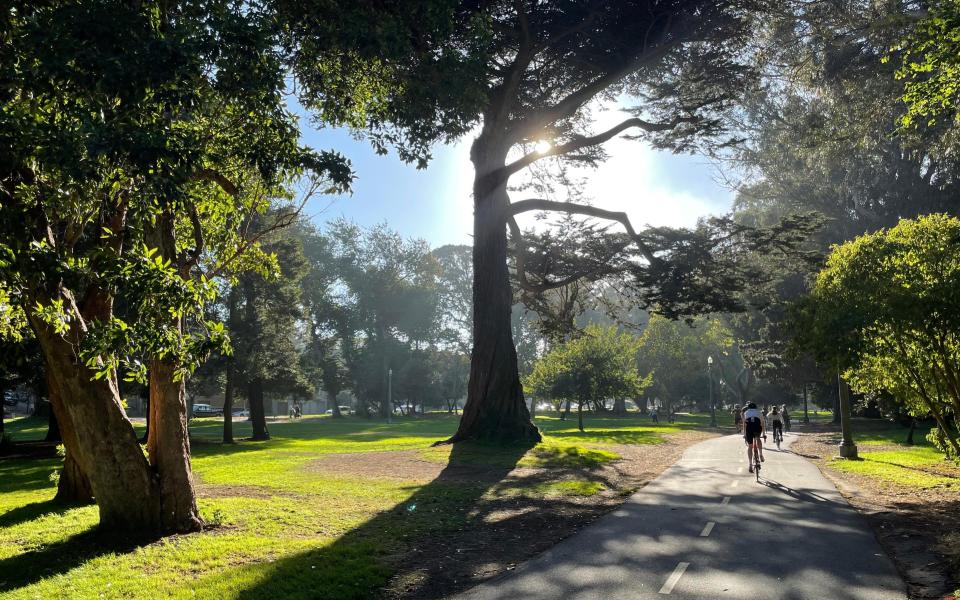iPhone 12 and 12 Pro review: designed for a 5G future that we're still waiting for
When Apple's iPhone 3G was released in 2008, the device's potential was poorly understood.
Apple's second smartphone introduced the twin developments of internet on the move and the App Store, two features that made the iPhone the all-powerful device it is today. But it took time for people to realise the impact that mobile data and an infinity of downloadable apps would have. One reviewer described 3G compatibility as a "red herring", while the early App Store was full of gimmicks.
Why the history lesson? Well, because the iPhone 3G feels like the closest thing to the launch of this year's iPhones. The iPhone 12 and 12 Pro, which I have spent the last week using, feel more like phones built for the next few years than for right now, with potential that is yet to be tapped.
The phones are the first to support 5G mobile networks, whose hype is yet to be matched by substance. The MagSafe magnet system they introduce is the first crack at a feature that offers a lot of promise. The lidar scanner, which features on the Pro model, foreshadows an augmented reality future that isn’t yet here.

This is not a criticism. Even without the newfangled features, the iPhone 12 line is a set of very good phones. But they are what we have come to expect from Apple every year: better cameras, better screens, faster processors. Whether they are breakthrough phones will take longer to decide.
12 v 12 mini v 12 Pro v 12 Pro Max
Apple used to release one iPhone each year. That became two and then three as the smartphone market expanded. For the first time this year, there are four different models along the iPhone 12 line.
For most people, choosing is simple: Almost everyone who wants a new iPhone should go for the 6.1-inch iPhone 12 or 5.4-inch 12 mini, depending on what display size suits them. The mini won’t be released until next month but I predict it will sell very well - people have been demanding smaller iPhones for years. Both have the sharper and brighter OLED screens which have until this year been reserved for the more expensive handsets.

Meanwhile, the Pro models - the 6.1-inch 12 Pro and 6.7-inch 12 Pro Max - feel more designed for actual professionals than enthusiasts this year. Their advantages lie almost entirely in the camera, which boasts a third “telephoto” lens for better optical zoom, filming in Dolby Vision at 60 fps, the ability to shoot in RAW, and a lidar scanner for quicker autofocus in low light. If that sentence all made sense, then by all means consider the Pro.
At a glance: What's new
Before we talk about 5G, a brief run through of what’s different this year.
Design: The iPhone 12 has a flatter, boxier shape than the rounded edges of the last few years, returning to the angled corners of the iPhone 4 and 5. Phones are tools, and I can't say I've thought much about the design while using it, but it's nice enough. More importantly, it allows for a more compact and practical design, fitting more display into a smaller body.
Display: The new OLED (or Super Retina XDR) screen features across the line. If you're upgrading from a two or three-year-old phone, you'll spot the difference immediately: everything is dramatically sharper and brighter. Given the amount of time we spend staring at our phones, making text easier to read is a noticeable improvement.
Ceramic shield: This is the name Apple gives to the display material, claiming it is four times harder to smash than previous iPhones. This hasn't been tested for obvious reasons.
Processor: Apple's processors have been the best in a smartphone for some years now (check the Geekbench scores if you need evidence). This year’s A14 is another step up, although the difference is largely noticeable when processing photos and videos than in everyday use. Battery life has not noticeably improved.
No charger or headphones: For the first time, Apple is not bundling a charging plug or headphones in the box, justifying the move on environmental grounds. Apple does, however, include a Lightning to USB-C cable in the box, which I find confuses this message a little bit. USB-C allows for faster charging than the USB-A iPhone cables Apple has traditionally bundled, but a lot of people won't have a compatible plug. I would have preferred no cable, and let people buy them separately.
5G: is it ready?
On all the available evidence, the iPhone 12 is the most capable 5G phone on the market. The device supports more types of 5G frequency than any other. A "smart data" mode will save your battery by automatically switching between 4G and the more power-hungry 5G depending on how much bandwidth you need. The phone can mix 4G and 5G signals to give you the best speed. All this is a genuinely impressive feat of engineering, and the sort of thing Apple does best because of the way it fuses hardware and software.
The thing is, right now it's hard to put it to good use. In most of the places where 5G exists today, it is not noticeably faster than 4G, and in some cases slower.
I’ve been testing 5G on the Verizon network in San Francisco, which was switched on last week to coincide with the iPhone launch, and the fastest “ultra wideband” speeds are confined to a handful of streets. After a little hunting around I managed to find a blistering 600 megabit connection, and Apple said it had recorded 4 gigabits.

An impressive proof of concept, but most of the time you won’t get anything near that. In the UK, I'm told that under ideal conditions, 5G is currently up to six times faster than 4G, but you might have to stand under a cell tower to get it. Not to mention the fact that in 2020, we're all using our mobile networks a lot less as we sit at home on the Wi-Fi.
Of course, this is a moment in time. We keep phones for several years. 5G will improve. At which point, the question will be about what we do with that bandwidth. What purpose does gigabit-plus download speeds serve on a smartphone? Today, there isn't a great answer.
That doesn't mean we should write off 5G, though. In a couple of years, we may have become so accustomed to it that we find ourselves furious whenever our train turns a corner and the signal drops to a medieval four Gs. Having a 5G phone now might be considered future-proofing. Just don't expect immediate results.
MagSafe and wireless charging
If “MagSafe” rings a bell, you’ll remember it from the much-loved but now discontinued MacBook charging cable. On the iPhone 12, it’s been resurrected, referring to a hidden metal ring on the back of the device, on to which you can magnetically clip a range of accessories like mini wallets, cases, and popsockets.
A few magnets is not much to fuss over, but there’s more to it than that. The system has an NFC chip in it that can communicate with whatever accessory you’re attaching it to, allowing the phone and accessory to recognise one another.
Right now, this is mainly used for wireless charging. Apple is releasing its own MagSafe charger that latches on to the iPhone, enabling wireless charging speeds twice as fast as what you get on a regular Qi wireless charger, and none of the fiddling around to line the phone up correctly.

But it’s clear that MagSafe has a lot more potential than that. Perhaps a phone mount on your car dashboard that charges your phone, connect to the stereo, and instantly load up driving directions on Google Maps. Or touching your phone down on your home charger to turn on the lights and start playing music.
These functions don’t exist yet, and it’s not clear they will. Apple is controlling third party accessory makers’ access to MagSafe through a licensing programme, and it remains to be seen how open the company will be here. But there is a potentially fascinating market for modular accessories here.
It’s very likely that future iPhones come without a charging port altogether, and the iPhone 12 is a dress rehearsal for this future. So it at least seems likely that MagSafe will be an increasingly important part of the iPhone going forward.
Camera
Last year’s iPhones were a major overhaul of the camera system, adding the “ultrawide” 0.5x zoom lens, night mode, and the “deep fusion” feature that gave much more detailed photos by stitching together multiple exposures.
This year is more evolutionary. Night mode, which significantly improved low-light photos, is now on the selfie camera and the ultrawide lens (but not the Pro’s 2x “telephoto” lens), while deep fusion, which was previously reserved for the main 1x camera lens, now works across cameras. Apple has revamped its HDR system, which means scenes with complicated lighting look better.


The Pro phones, in addition to the third 2x lens, also pack a lidar scanner. This is the system driverless cars use to bounce light off objects, creating a 3D scan of an environment. This allows for the popular Portrait mode photos to be combined with night mode, and improves autofocus in low light situations. It also helps in augmented reality settings, but despite several years of Apple supporting the holographic technology, it is yet to crack into the mainstream.
Apple has packed other features into the Pro cameras, such as the ability to shoot in a RAW file format, but for the first time, it feels as if the abilities of the Pro’s camera are beyond what the average consumer might need. Having options is no bad thing, but it’s all the more reason for most people to stick with the standard iPhone 12.
The beauty of the iPhone camera is that it has never had complicated settings or options: you just point and shoot and the camera and software does the work. That’s as true as ever this year. If you’re upgrading from anything older than a two-year-old phone, you’ll notice a significant improvement.
Verdict
The iPhone 12 is two different phones, depending on how you look at it.
The first is what it is right now: a continuation of how Apple’s handsets have changed each year since 2017’s iPhone X: a welcome upgrade that makes everything work a little better without any radical overhaul.
The second is what it promises: 5G networks are unproven today, and it is unclear how much use we’ll get out of them, but they have enough backing that we should want to be along for the ride. MagSafe is an intriguing addition that looks set to pave the way for a wirelessly charged port-free iPhone and an array of interesting accessories. If both live up to their potential, the iPhone 12 might be seen as the biggest advance in years.
Neither of these additions will be front of mind to most buyers: the main reason most people will buy the iPhone 12 is the same as any other year: because their last one breaks or their contract is up for renewal. They are unlikely to be disappointed: The iPhone 12 is a very good phone: it runs fast, takes excellent photos and has a fantastic screen.
But judging the iPhone 12 on a different measure - significantly pushing the technological boundaries forward - will have to wait.
Pros
Standard “non Pro” models are much improved, with better screens and a mini option for those who crave a smaller display.
MagSafe is an intriguing concept with a lot of potential, depending on how it is allowed to develop.
Improvements across the board on camera, design and processor.
Cons
5G remains an unknown quantity, despite impressive engineering effort on Apple’s behalf.
Apple’s introduction of Face ID several years ago did not allow for the rise of face coverings. One point to the fingerprint sensor.

 Yahoo Finance
Yahoo Finance